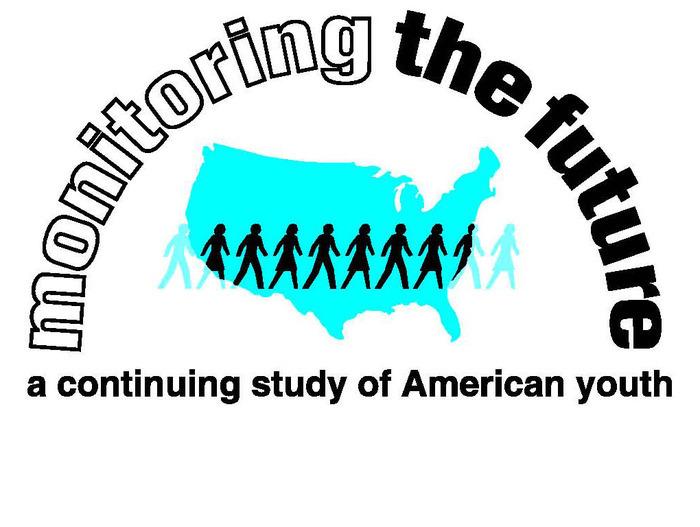NIH’s 2019 Monitoring the Future survey finds continuing declines in prescription opioid misuse, tobacco cigarettes, and alcohol

Credit: University of Michigan
Findings from the 2019 Monitoring the Future (MTF) survey demonstrate the appeal of vaping to teens, as seen in the increased prevalence of marijuana use as well as nicotine vaping. Results from the 45th annual MTF survey, a nationally representative sample of eighth, 10th and 12th graders in hundreds of U.S. schools, were announced today by the director of the National Institute on Drug Abuse (NIDA), part of the National Institutes of Health, along with the University of Michigan scientist who leads the research team. The self-report survey is given annually to students who respond to questions about their drug use and attitudes.
Past year vaping of marijuana, which has more than doubled in the past two years, was reported at 20.8% among 12th graders, with 10th graders not far behind at 19.4% and eighth graders at 7.0%. Past month marijuana vaping among 12th graders nearly doubled in a single year to 14% from 7.5%-the second largest one-year jump ever tracked for any substance in the history of the survey. (The largest was from 2017-2018 with past month nicotine vaping among 12th graders). For the first time, the survey measured daily marijuana vaping, which was reported at 3.5% among 12th graders, 3.0% among 10th graders, and 0.8% among eighth graders. The MTF investigators documented more detailed findings on teen vaping of marijuana in a research letter released today in the Journal of the American Medical Association. High rates of nicotine vaping reported in the MTF survey were released in September.
Marijuana continues to be the most commonly used illicit drug by adolescents. After remaining mostly stable for many years, daily use of marijuana went up significantly since 2018 among eighth and 10th graders-now at 1.3% and 4.8% respectively. However, overall past year marijuana use rates remain steady among teens (35.7% among 12th graders; 28.8% among 10th graders; and 11.8% among eighth graders).
Past year rates of any illicit drug use, other than marijuana, remain relatively low among 12th graders; past year use was 3.6% for LSD; 3.3% for synthetic cannabinoids; 2.2% for both cocaine and MDMA (ecstasy); and 0.4% for heroin. Other drug use, including the misuse of prescription medicines and the use of alcohol as well as tobacco cigarettes, continues to decline.
“We are heartened to see the continuing decline in the use of many drugs, particularly non-medical use of prescription opioids; however, teens are clearly attracted to vaping products, which are often concentrated amounts of drugs disguised as electronic gadgets,” said NIDA Director Dr. Nora Volkow. “Their growing popularity threatens to undo years of progress protecting the health of adolescents in the U.S.”
Other highlights:
Prescription Drugs
- Past year rates of misuse of the opioid pain reliever Oxycontin dropped significantly among 12th graders over the past five years, with only 1.7% reporting in 2019-the lowest level of use since it was first measured in 2002 (at 4.0%).
- Past year rates of misuse of the opioid pain reliever Vicodin is now at 1.1% for both 12th graders and 10th graders. For 12th graders, it is a significant drop from 2018 and the lowest rate since it was first measured in 2002 (at 9.6%). These rates represent a significant five-year decline in these two grades.
- Past year misuse of the ADHD medication Adderall saw a significant decline over the past five years among 10th and 12th graders-from 4.6% to 3.1% for 10th graders and from 6.8% to 3.9%, for 12th graders. However, there was a significant increase among eighth graders?now reported to be 2.5%, up from 1.3% in 2014.
Tobacco Products
- Use of regular cigarettes continues to decline among teens, especially among 12th graders who had a significant decline in past month use, now at 5.7%, down from 7.6% last year and 13.6% five years ago.
- In 2019, 2.4% of 12th graders said they smoked cigarettes daily, a significant decline from 3.6% in 2018. However, 11.7% said they vaped nicotine daily in 2019, the first year daily vaping use has been measured.
- One in 4 12th graders say they vaped nicotine in the past month, along with 1 in 5 10th graders, and nearly 1 in 10 eighth graders.
- Many teens say they vape for the flavor, to experiment, for social reasons, or to feel good. However, from 2018-2019, the number of 12th graders saying they vape because they are “hooked” more than doubled to 8.1%, up from 3.6%. It is important to note that not all teens know what is in the products they are vaping.
Alcohol
- Alcohol use (past year) saw a significant five-year drop among 10th and 12th graders in 2019, now at 37.7% and 52.1%.
- There was also a five-year decrease in binge drinking in the 10th and 12th grades. The survey reports that 14.4% of 12th graders said they binge drank in 2019 compared to 19.4% in 2014. Among 10th graders, 8.5% reported binge drinking compared to 12.6% five years ago. Binge drinking is defined as five or more drinks in a row in the past two weeks.
###
To highlight the MTF survey findings, NIDA will post two infographics on its website: one related to vaping and the other on several other drug categories.
The survey, conducted since 1975, is funded by a government grant to the University of Michigan, Ann Arbor and is the only comprehensive, large-scale federal government survey on teen drug use that releases findings the same year the data is collected. In 2019, questions were added on daily vaping to address public health concerns about e-cigarettes and vaping devices. This year, the Food and Drug Administration and the Centers for Disease Control and Prevention (CDC) have warned the public about lung illnesses and deaths related to vaping, with some patients as young as 13. The CDC posts periodic updates and recommendations for the public.
The MTF investigators have published several papers and research letters related to these findings:
(1) Trends in Adolescent Vaping, 2017-2019, The New England Journal of Medicine, September 18, 2019 (online).
NIDA Press Release: Teen e-cigarette use doubles since 2017
(2) Flavors of e-Cigarettes Used by Youths in the United States, Journal of the American Medical Association, November 5, 2019.
NIDA Science Spotlight: NIH-funded study finds teens prefer mint and mango vaping flavors
(3) Trends in Reported Marijuana Vaping among U.S. Adolescents, 2017-2019, Journal of the American Medical Association, December 18, 2019.
Overall, 42,531 students from 396 public and private schools participated in this year’s MTF survey. The survey has generally been administered to students in paper form, but investigators have been transitioning to electronic tablets. The survey will be fully electronic by 2020. The survey measures drug, alcohol, and cigarette use and related attitudes in eighth, 10th and 12th graders nationwide. Survey participants generally report their drug use behaviors across multiple time periods: lifetime, past year, past month, and in some cases, daily. NIDA has provided grant funding for the survey since its inception. MTF is funded under grant number DA001411.
For additional information on the MTF Survey, see:
- NIDA’s Monitoring the Future webpage
- University of Michigan press release
Follow Monitoring the Future 2019 news on Twitter at @NIDANews or join the conversation by using: #MTF2019. Information on all drugs can be found on NIDA’s website.
The National Institute on Drug Abuse (NIDA) is a component of the National Institutes of Health, U.S. Department of Health and Human Services. NIDA supports most of the world’s research on the health aspects of drug use and addiction. The Institute carries out a large variety of programs to inform policy and improve practice. Fact sheets on the health effects of drugs of abuse and information on NIDA research and other activities can be found at http://www.
About the National Institutes of Health (NIH): NIH, the nation’s medical research agency, includes 27 Institutes and Centers and is a component of the U.S. Department of Health and Human Services. NIH is the primary federal agency conducting and supporting basic, clinical, and translational medical research, and is investigating the causes, treatments, and cures for both common and rare diseases. For more information about NIH and its programs, visit http://www.
NIH…Turning Discovery Into Health®
Media Contact
NIDA Press Office
[email protected]
301-443-6245
Original Source
https:/




